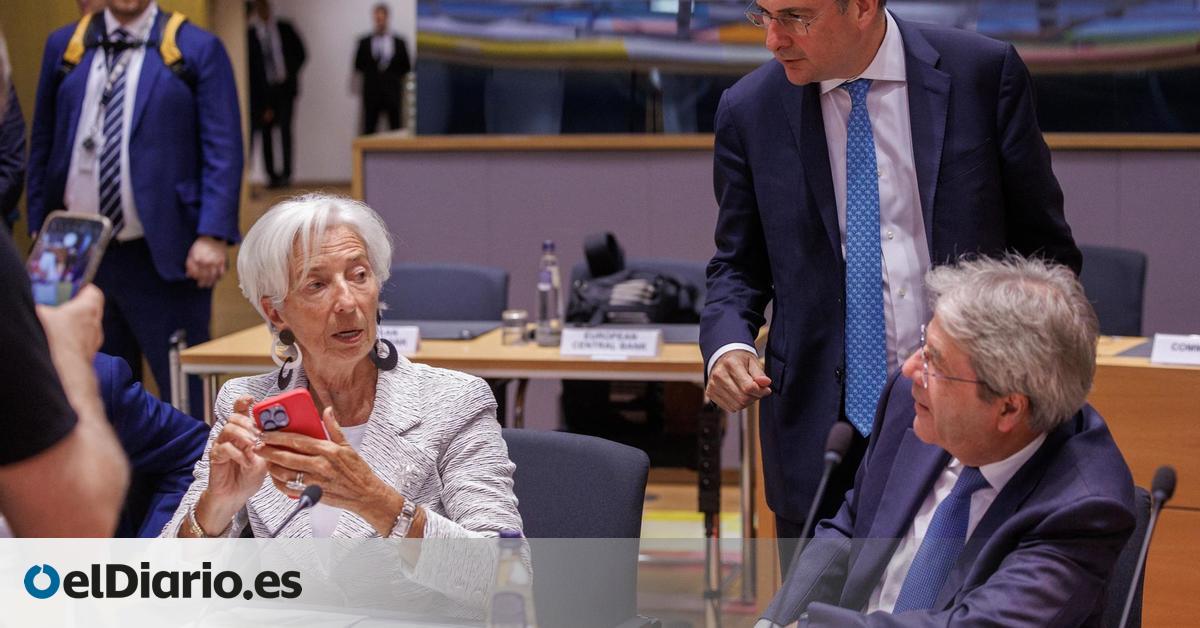
The European Central Bank (ECB) decided on Thursday to stop easing mortgages and loans in general, and left official interest rates in the eurozone at 4.25%.
The Governing Council of the monetary institution postpones a new cut in the official ‘price’ of money, after lowering it in June from 4.5% – a maximum not seen since 2008 – and after raising it aggressively to fight inflation from 0% in July 2022.
“Monetary policy remains tight at the financial level. At the same time, domestic inflationary pressures remain high, services inflation is elevated and headline inflation is likely to remain above target.” [el 2%] well into next year,” said the statement published by the ECB after its meeting on Thursday.
This monetary austerity seeks to undermine households’ ability to consume (particularly through the Euribor, the benchmark for mortgages) and companies’ ability to invest and hire. In other words, by stifling demand and thus influencing prices. And by running the risk of causing a recession and destroying jobs.
The reference to “intense” inflationary pressures casts doubt on whether the ECB will resume interest rate cuts in September, although the Euribor has been anticipating this with its fall (you can see it in the graph) and although it could be the moment when the Federal Reserve (Fed) decides on the first reduction in the “price” of money in this monetary cycle. Most experts regretted not finding any clue in the press conference given by the president of the institution, Christine Lagarde, this Thursday. “The decision in September is very open,” she stressed.
In an exclusive published hours after the press conference, the news agency ‘Bloomberg’ collects opinions from members of the ECB itself who “do not want it to be assumed that a cut in interest rates in September is a done deal.” They also question whether two more cuts in 2024 is “a realistic forecast.”
“The Governing Council will continue to follow a data-driven approach, with decisions taken at each meeting, to determine the appropriate level of tightening and its duration. In particular, its interest rate decisions will be based on its assessment of the inflation outlook taking into account new economic and financial data, the dynamics of underlying inflation and the impact of the current economic crisis on inflation. [que excluye de su cálculo la energía] and the intensity of monetary policy transmission, without committing in advance to any specific rate path,” the ECB said in its statement.
Inflation in the eurozone as a whole in June slowed to 2.5% (in Spain it is higher) compared to the same month last year – very close to the theoretical target of 2% year-on-year. However, the ECB is clinging to the rise in the prices of services and the strength of the labour market as justification for prolonging the ‘punishment’ of families and companies.
“The 2.5% inflation rate is very close to the target and we have to understand that monetary policy is like an ocean liner: you can’t turn at the mouth of the harbour, you have to do it before if you don’t want to crash,” explained Víctor Alvargonzález, director of strategy and founder of the independent advisory firm Nextep Finance, to elDiario.es on Wednesday, just before the meeting of the Governing Council of the institution on Thursday.
The big threat is that “monetary policy is going by inertia.” That is, we are now seeing the effect of the interest rate hikes of six months ago with the drop in mortgage lending or the delay in investment decisions by companies that need financing and have to pay dearly for it.
With weak growth in activity forecast for the eurozone as a whole, with the notable exception of Spain, in another six months, if “restrictive” interest rates remain in place much longer, the risk is a much more serious slowdown in the economy.
“It is believed that the ECB will need more information to develop a more aggressive policy that will help boost investment and consumption. Therefore, the rate cut process will be slower than was expected a few months ago,” explains the Spanish Institute of Analysts.
Source: www.eldiario.es

